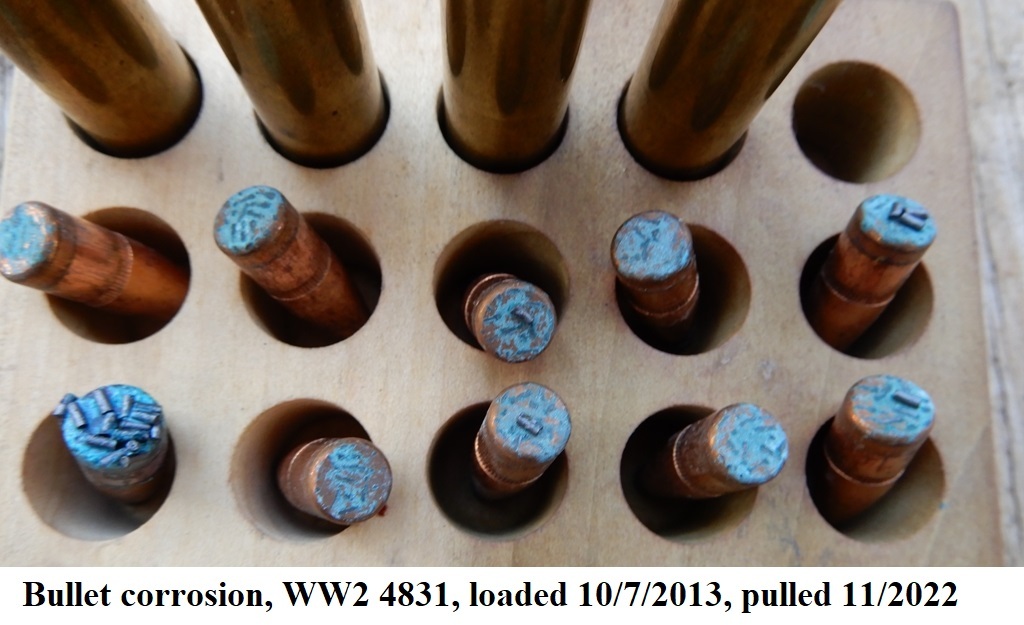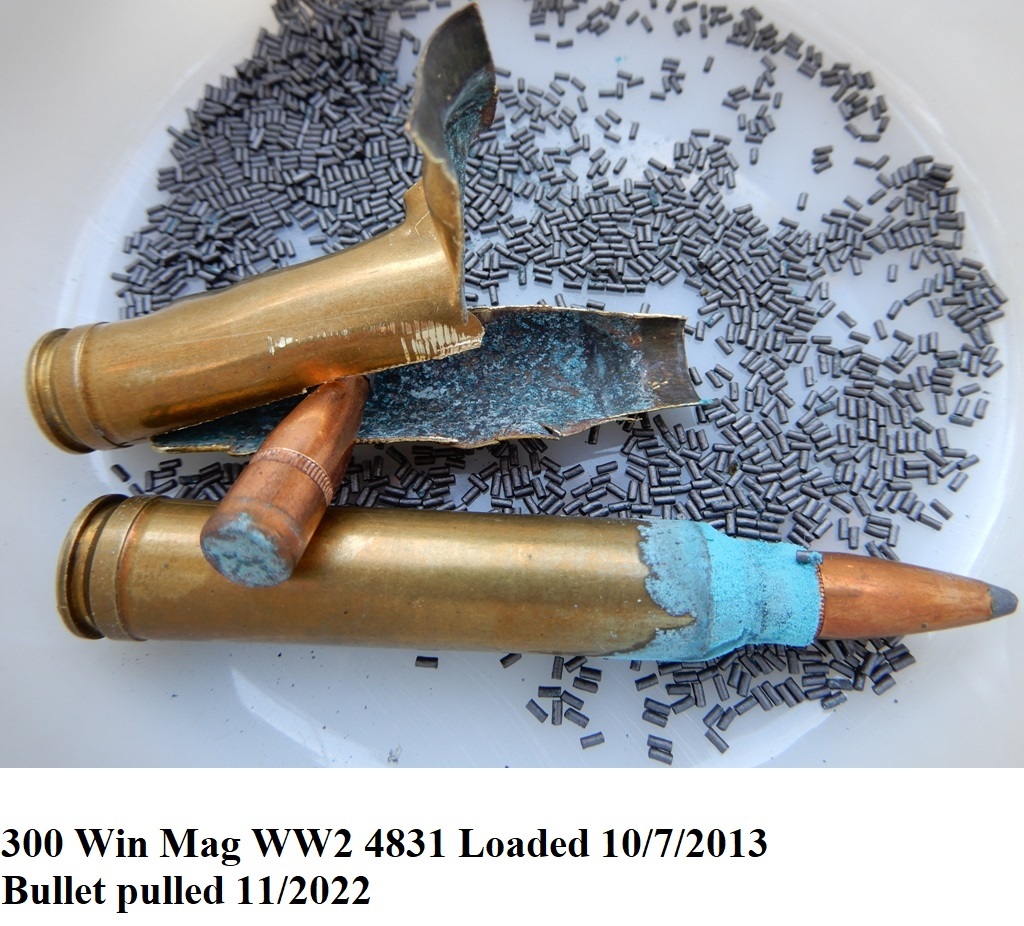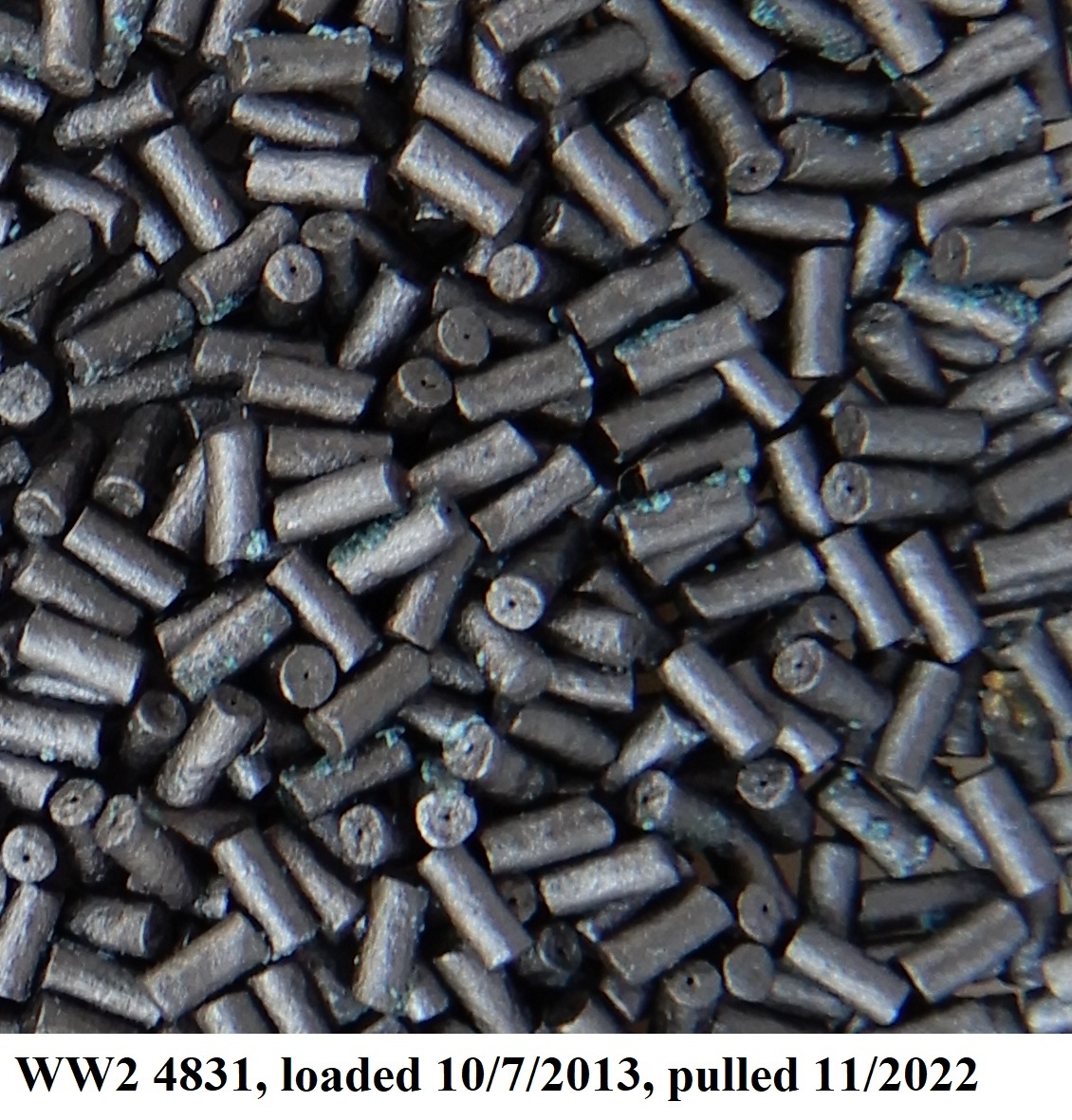I’d point out that what this 10-shot group does show is that he’d pretty centered on the bull and can have confidence in his reticle. I’m guessing he’s zero’d an inch high at a 100 yards. I might take it left one click, but what the heck, it’s still a small sample.

I wish I had such a good plan. This was a rifle I purchased from the old Gun Club President. He had the pre 64 M70 converted to 300 Win Mag. And he had been shooting the thing for several decades, and not being happy with it. The thing is, Ole Gun Club Pres does not clean his firearms. And when I examined this rifle, I could not see rifling! Luckily he had a bore brush around and I ran that brush about 20 times and was able to determine the bore did not look pitted.
Ole Pres also gave me a box of ammunition, some fired cases, some loaded. I looked at all the charges and they reflected the loading manuals of the 1970's. That is, all the loads were as much as five grains above today's maximums!
When I decided to look at the reloads, this corroded case caught my eye
It was in the box, bullet down, and the front is obviously corroded. This happens when nitrogen dioxide (NO2) from old deteriorated gunpowder leaks past the bullet and settles in the box. So, what did the inside of these cases look like?
the powder did not look bad, except for the brass corrosion particles stuck to some,
there are posters here who claim that old gunpowder is safe to use. When I can see obvious signs of gunpowder deterioration, I am not going to use the stuff, and run the risk of blowing up my rifle. I sure did not want to use cases that were corroded internally.
Old Pres had given me a can of that powder ten years before, and back then I did not see anything funny over the chronograph.
But that is only 15 shots or so. Maybe if I had tried harder, I could have found that round that went from deflagration to detonation. Stuff happens with old energetics. Maybe the first old mortar round takes out the crew, maybe the 50th. I don't know how many rounds had been fired before the one blew that killed Combat Photographer Specialist Hilda Clayton and the mortar crew,nor do I know the age.
But you can see the pictures that were taken just as the "training" round went off.
Anyway, looking at Ole Pres's notes, he had written "finally got a good group!" This was after years of testing. But remember, his barrel was jacketed fouled from throat to muzzle. His good five shot group was probably a statistical aberration. I decided to use cheap Hornady 150 FMJ's and just picked a middle of the road charge from a modern loading manual and all I wanted to know was, whether I could get on paper. I also dipped every bullet in hair gel, which is a mix of vasoline and perfume. I was very happy to find that there was absolutely no trace of jacket fouling in the tube when I finished shooting. The scope is some 70's 6X Luepold relic, and coin slotted for adjustment. It is not click adjustable, and I have had the experience of reticle jump with old scopes. Make an adjustment, shoot, nothing happens, shoot again, and maybe again, and then the group moves. It is best with old scopes to leave them alone once you are "there". I was just trying to get centered and see if the thing would shoot round groups.
And I quit, probably before I had shot 30 rounds. The thing kicks.
But the fact I shot a two inch group gives me encouragement to fully bed the action in the aftermarket stock, and use better bullets. I have lots of 190 SMK bullets. And lots of AA4350. Might as well blow them all downrange.
I took a rest from pulling all the bullets from all the WW2 IMR4831 cases, but each batch, I found internal corrosion. I will figure out what to do with the base corroded bullets later. Might shoot them, after all, I do not expect sub MOA from a hunting rifle. If I could get a 1.5 MOA ten shot group, I would go hunting with it, were I so inclined.
How many deer have been taken with lever action 30-30's that shoot 3 to 4 inches at 100 yards? Millions maybe?
these are the good groups. I had loads that would not stay on the paper.




 and some of us realize that 3000+ fps is not absolutely necessary. "Garden variety", less expen$ive projectiles by major manufacturers are EXCELLENT! A 1 1/2 inch group or smaller at 100 yards is very acceptable accuracy, generally easily obtained, and effective out to a reasonable distance for most of us...3-400 yards. If you can find it, in a back issue of either HANDLOADER OR RIFLE magazine there is an article by John Barsness; "Loads that Work". Very useful! Also in the same volume...iirc...is an article on annealing brass, verified by a metallurgist, using a candle. The only danger is burning your fingers. (Don't ask!)
and some of us realize that 3000+ fps is not absolutely necessary. "Garden variety", less expen$ive projectiles by major manufacturers are EXCELLENT! A 1 1/2 inch group or smaller at 100 yards is very acceptable accuracy, generally easily obtained, and effective out to a reasonable distance for most of us...3-400 yards. If you can find it, in a back issue of either HANDLOADER OR RIFLE magazine there is an article by John Barsness; "Loads that Work". Very useful! Also in the same volume...iirc...is an article on annealing brass, verified by a metallurgist, using a candle. The only danger is burning your fingers. (Don't ask!)







